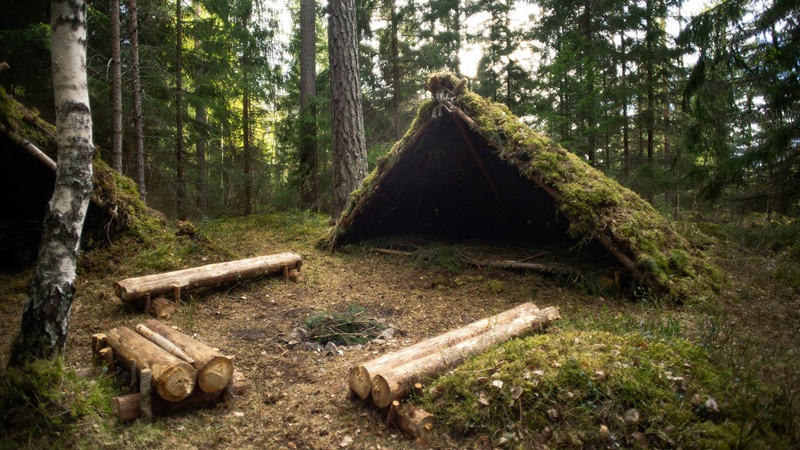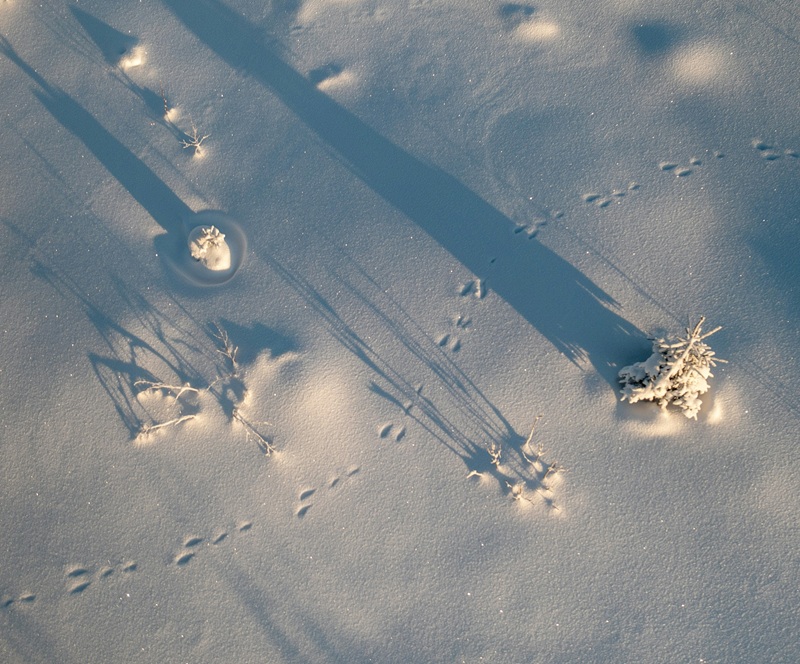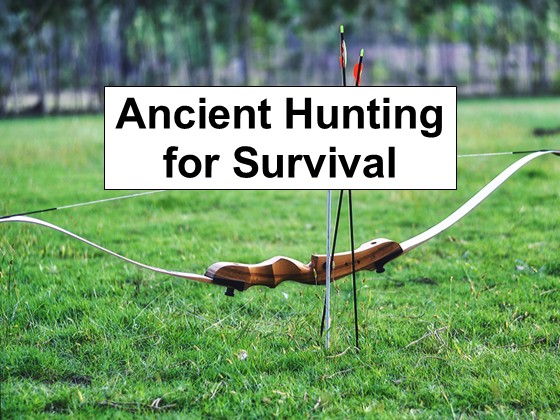The well-known archetypal image of an ancient hunter, clad in animal pelts and wielding a rudimentary hand-crafted spear, might seem worlds apart from a modern individual braving the wilds. The finest advancements in technology inform modern survival techniques and strategies, whether that’s GPS navigation or tracking tools.
Yet, these two worlds aren’t so different beneath the surface. Ancient hunting strategies have a lot to offer in modern survival scenarios, and understanding the core principles that both these worlds share can help us learn how to synthesize the best of the past and the present.
The Hunter’s Eye: Building Situational Awareness
Awareness is a lot more critical than mere observation in the high-stakes realm of survival. One needs a finely tuned sensitivity to every aspect of the environment when surviving in the wild. Ancient hunters, lacking today’s easily accessible resources, relied on a more intimate knowledge of the natural world to survive—we call this the ‘hunter’s eye.’
This awareness encompasses not only the presence of the prey but also:
- Changing weather patterns and likely trends
- Potential environmental dangers
- The resources available to them at any given time and place
While it might be difficult to attain the same level of intimate, natural knowledge today, a heightened sense of awareness is absolutely necessary for modern survival.
Just as ancient hunters tracked and interpreted the flora and fauna around them to understand the landscape, a modern survivor needs to learn the language of their terrain. This includes everything from observing the landscape for navigable routes, locating essential resources like edible plants and clean water, and identifying hazards such as unstable ground.
Tracking is an ancient and invaluable skill that can be developed here. Footprints, broken branches, and irregular vegetation can all offer priceless insights into potential threats and food sources. We’ll go into more detail about this further on.
Natural Cues
Understanding and harnessing natural cues is equally essential, as they can help with navigation and shelter. For example:
- Interpreting wind direction can help survivors figure out how to position a fire best to minimize their visibility.
- The sun’s position, similarly, can help with basic navigation and reveal suitable locations for shelter—whether it’s a simple cave, an elevated position with overhanging rocks, or a dense thicket for short-term cover.

Resourcefulness and Improvisation
It’s easy to look at a key piece of equipment in a modern hunting tool, like compound bow strings, and assume ancient hunters had access to somewhat similar equipment. But of course, in reality, these hunters lacked the convenience of high-quality materials and durable equipment, pushing them to become masters of improvisation and learn how to transform the rural environment around them into a dynamic resource pool for all sorts of tools and hunting gear.
Toolmaking
Developing the ingenuity and resourcefulness that was the backbone of ancient hunting strategies is a cornerstone of modern survival. Let’s start by looking at the art of improvised toolmaking.
Rudimentary toolmaking developed out of sheer scarcity. Ancient hunters were forced to develop a careful understanding of the various properties of natural materials and learn how to manipulate them to achieve their goals. This included:
- The ability to sort and identify different stone types for different use cases, from knapping to cutting and scraping. The hunters of the Indus Valley Civilization were remarkably efficient at this, using everything from chert to steatite for their tools.
- Understanding the differences between different types of wood. Pine needles made excellent fire tinder, while hardwoods like oak could be used as handles for makeshift axes.
- The resourcefulness to capitalize even on discarded animal remnants, turning long bones into sharpened needles for stitching, or using ribs as fish hooks.
Even the creation of a simple tool required an understanding of multiple areas. For example, to create a basic hand axe, a hunter would need to locate a suitably sharp stone (such as a chert) and find the right type of wood for the handle.
This ingenuity can also be applied to modern survival scenarios—as long as the individual has the time and patience to develop these skills. For example, broken ceramic found in the wake of a natural disaster can be knapped to create a sharp edge. Metal objects, such as aluminum cans, can similarly be used as cooking pots.
The key is to shift our perspective from relying on mass-produced manufactured tools to recognizing the potential that even the most basic materials hold.
Thinking Outside the Gear Bag
While a well-stocked gear bag/survival kit would be a boon in any emergency, most people simply don’t have the luxury to be prepared ahead of time. Additionally, relying on pre-packaged gear can lull you into a false sense of security, preventing you from developing the resourcefulness that long-term survival requires.
Understanding Animal Behavior and Tracking
Contrary to popular belief about ancient hunting, tracking wasn’t as simple as following a set of footprints in the dirt, but rather a more complex combination of observation, deduction, and an understanding of animal behavior.
Every set of footprints tells a story about the animal’s size, speed, and passage. Hunters would look for those subtle signs in the dirt, from broken twigs to disturbed vegetation, to understand where the prey had been and where it might go next. As a modern survivalist, you might not encounter the same large prey as these skilled hunters, but understanding the basic principles of tracking and animal behavior is still very crucial.
Interpreting Signs
To track your prey successfully, you’ll need to build an intimate understanding of the ecosystem around you and how it connects everything living within it. Let’s break that down with a few examples:
- Animal droppings can reveal not just the presence of a particular animal but also its diet and overall health.
- Environmental cues, such as disturbed soil, can indicate recent foraging activity in the area, a sign to be alert. Similarly, markings on trees can indicate a territorial animal.
Identifying and interpreting these subtle clues allows a modern survivor to create a mental map of the local ecosystem, making it easier to travel safely, recognize potential dangers, and even identify food sources.
Anticipating Animal Movement
Tracking the movement of the local fauna is just one-half of the coin. Ancient hunters also survived by being able to anticipate animal movement accurately. They did this by understanding animal behavior, from their feeding times to migratory patterns and responses to weather changes. Hunters could predict their movements and position themselves strategically ahead of time.

This predictive ability is equally important in modern contexts, as it can directly inform where to set snares or traps, how to avoid dangerous encounters, and where to look for various types of edible plants. For instance, observing bird activity can be a great way to locate nearby water sources or fruit-laden trees.
Developing a Tracker’s Mindset
Tracking requires an incredible amount of patience and persistence, qualities that are becoming increasingly rare in a modern landscape full of distractions. Hunters often spend hours in uncomfortable positions, looking intently for changes in the environment and adapting to changing conditions at a moment’s notice.
As modern survivalists, we can develop this mindset in and out of the wild. In the field, one has to develop mental discipline through sheer practice and experience, as there is no real substitute for these things. Out of the field, survivalists can work on this mindset through simple meditation and minimizing nearby distractions.
Resource Management and Future Planning
Adaptation, observation, and reaction are all essential for survival in challenging environments, but one also needs to know how to prepare for the future. Ancient hunters were no strangers to maximizing resources. They would preserve their hard-earned spoils using varying techniques to ensure a food supply for leaner times.
Food Preservation
Ancient cultures around the world developed ingenious ways to preserve their food, extending its usability drastically without using the modern conveniences we’re so used to today. These techniques usually relied on what was readily available, and so they varied from one region to the next. Let’s take a look at a few examples:
- Drying: Drying is one of the oldest and simplest ways to preserve food, with evidence of sun-drying techniques dating all the way back to ancient Mesopotamia. This technique is suitable both for meat and fish, as it inhibits the growth of bacteria and mold. Ancient drying techniques also led to unique cuisines, such as charqui in South America, which rural communities still consume today.
- Smoking: Smoking preserves food by adding an additional preservation layer beyond drying. The smoke generated during the process adds antibacterial and antioxidant properties to the food while also imparting a unique flavor profile. This technique is still used by indigenous Australians, primarily to smoke fish and meats.
- Cooling: Naturally cool environments like caves and springs are perfect resources for short-term food preservation. For instance, ancient Chinese hunters would use (and in some cases even build) ice cellars to preserve food. In more arid regions, hunters would use evaporative cooling techniques to keep their food fresh.
- Fermentation: Fermentation might not be as accessible of an option as some of the earlier techniques listed here, but it’s still a fantastic way to preserve food. This technique uses bacteria to create acidic conditions, transforming food and preventing long-term spoilage. Fermentation can also be used to preserve vegetables and simple grains.
Rationing and Seasonal Awareness
Food, water, fuel, and even tools are typically limited in most survival scenarios. This makes effective resource management a top priority. Modern survivors need to be able to make strategic decisions about resource allocation, carefully dividing food supplies to ensure long-term survival.
Seasonal awareness can help us make better resource allocation decisions. This awareness informed ancient survival strategies, allowing hunters to anticipate periods of abundance and scarcity. If you know what the future has in store, you can plan better and even thrive in a challenging scenario.
- Foraging: Indigenous cultures worldwide developed an extensive knowledge of edible plants and their seasonal cycles. Today, that knowledge is readily available in the palm of our hands. By taking the time to identify local edible plants and understand their availability, you can give yourself a massive survival advantage. Native American tribes in the North are an excellent example to follow here, as they prioritized plants like wild leeks, which were readily available during and after harsh winters.
- Shelter: A cave that looks warm and safe during a harsh winter can easily turn into a deadly trap teeming with predators in the summer. Older civilizations knew to adapt their shelter-building techniques to the changing weather conditions. Inuits would use igloos for warmth, while tribes in North Africa resorted to portable shelters for shade during the summer. Understanding the right type of shelter for the seasonal climate around you is necessary for survival. You’ll also have to consider the materials available for construction. At the very least, a simple debris hut can provide sufficient shelter from the cold.
Mind Over Matter
Survival today, just as it was for ancient hunters, is as much about the mental as it is physical. Hunters faced far harsher terrain and weather, carrying out their daily tasks in punishing conditions while still maintaining their focus and determination.
The modern survivalist needs to foster a similar capacity to endure, one that transcends physical limitations. One must be able to remain calm under pressure, control one’s panic, and maintain a positive outlook even if present circumstances look grim. These qualities can only be fostered through extensive training and thorough preparation.
The Future of Survival
The connection between ancient hunting strategies and modern survival scenarios might not be immediately evident to most of us, but it’s clear to see that the past still has a lot left to teach us. While a GPS device can help us pinpoint our location and guide the way forward, it simply can’t replace the intimate knowledge of the natural world that ancient hunters relied on. In times of scarce resources, these very techniques can help keep us safe and guide the way forward.

Leave a Reply